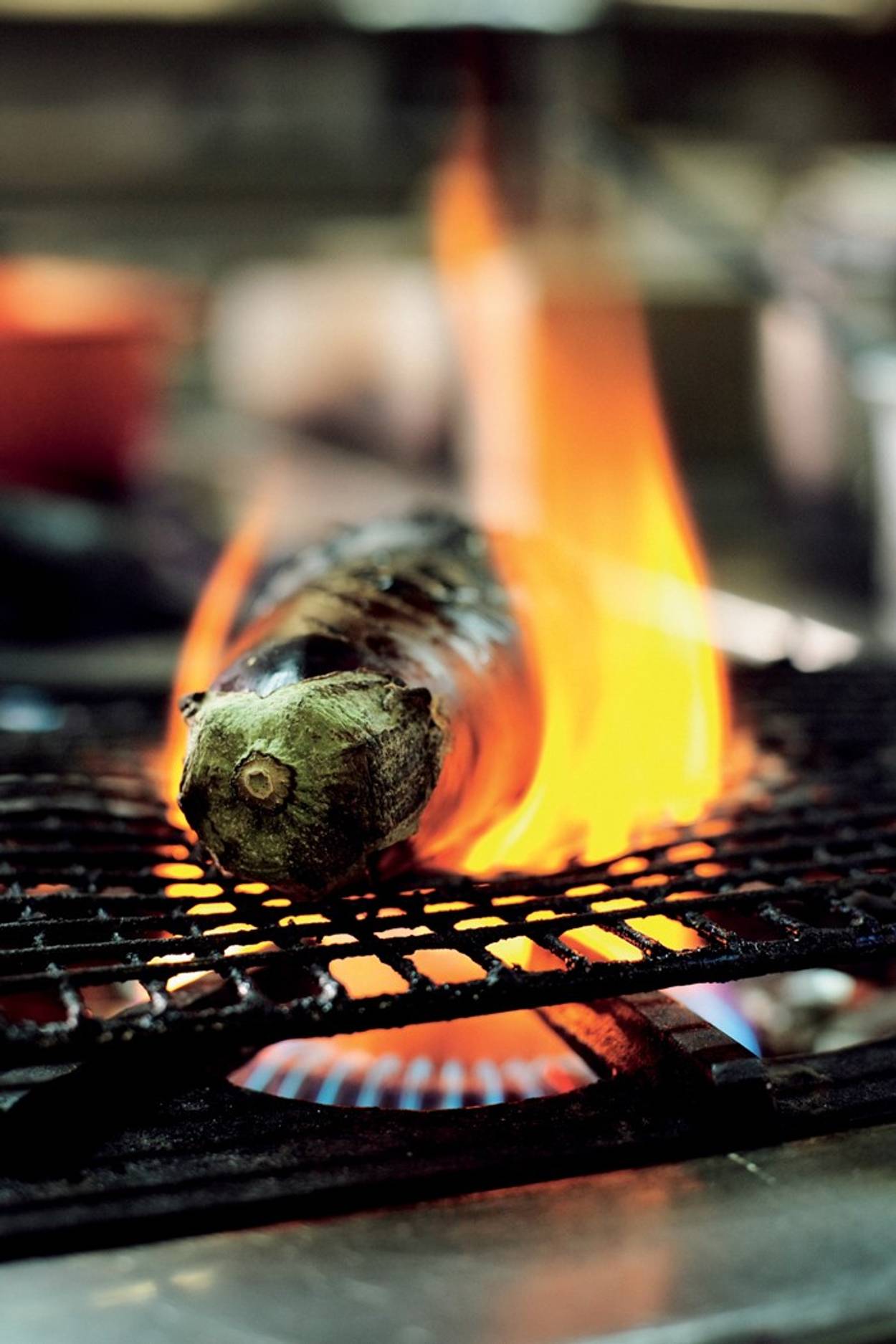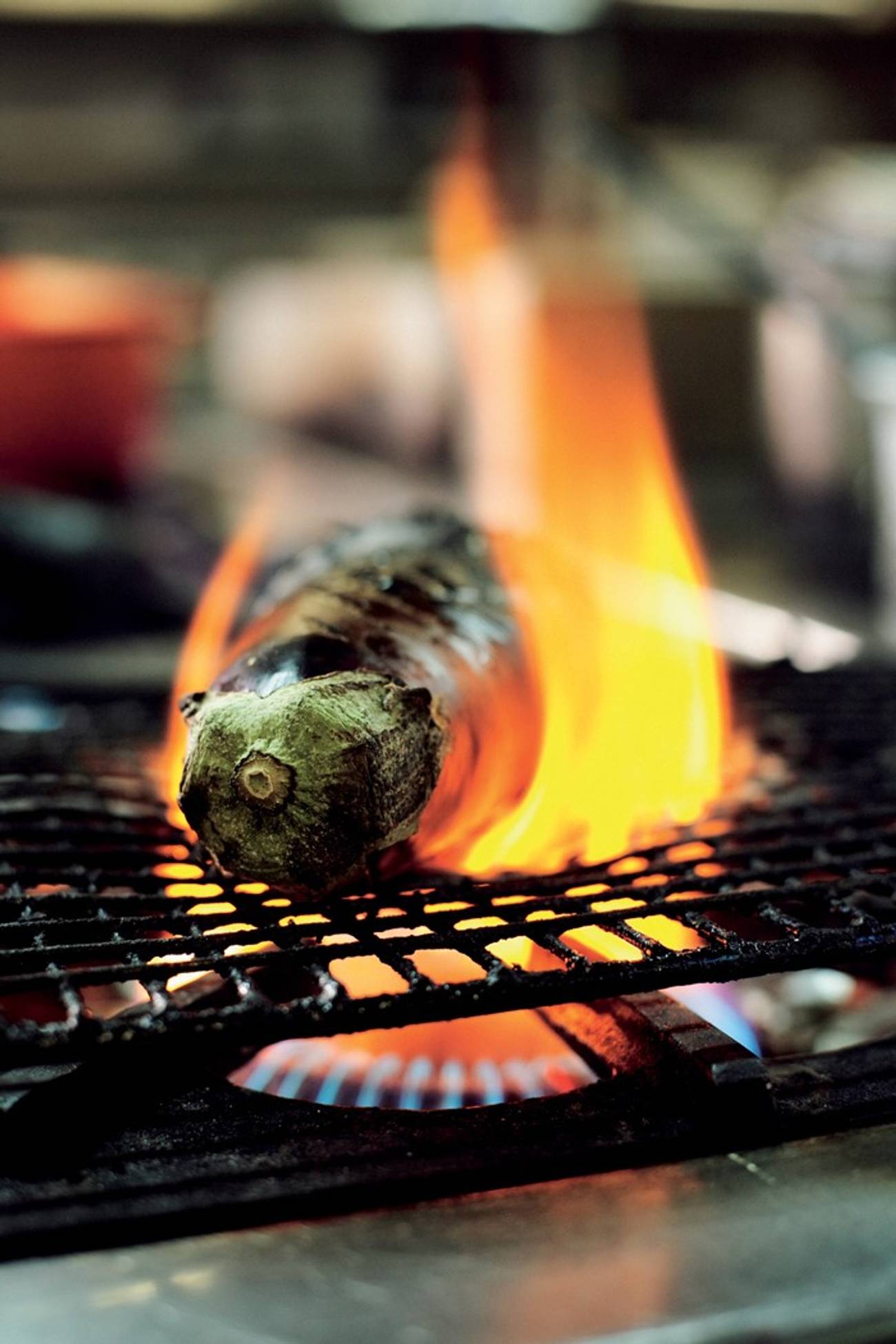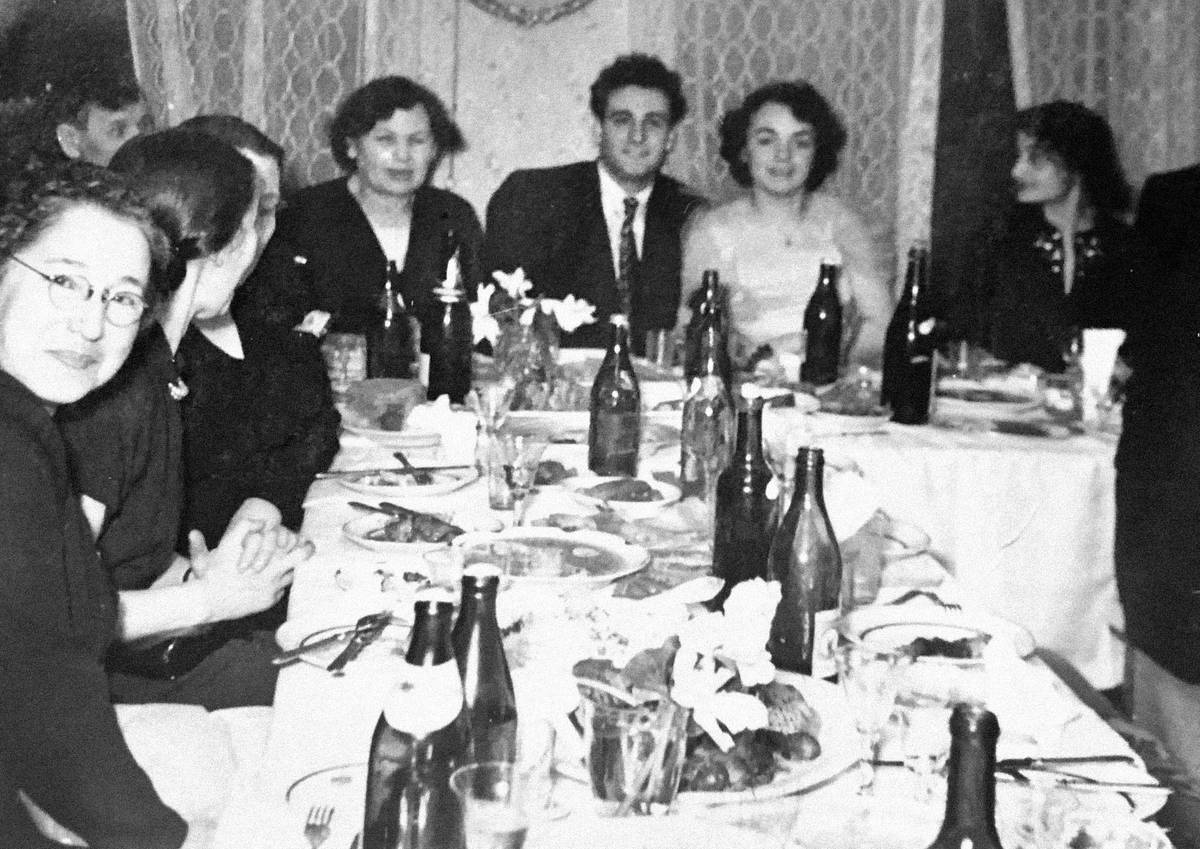Jewish Culinary Crossroads
Why did my grandmother cook gefilte fish and smoked eggplants, helzel and baklava? The answer lay in her Bessarabian heritage.




A childhood memory: When I was about 6 years old, I found three plump carp swimming in the bathtub of my grandparents’ apartment in Riga. I fed them breadcrumbs and tried to convince my grandparents to let me get into the tub with the fish. But the next morning, when I went to visit my new friends, they weren’t there. Somehow I knew better than to inquire about their fate. I knew it had something to do with my babushka Rosa’s famous gefilte fish.
Another childhood memory: A relative from my grandparents’ native town of Kishinev—the capital of Moldova, formerly Bessarabia—came to visit, carrying a suitcase full of shiny, midnight blue balloonlike vegetables. I had never seen eggplants before; they didn’t grow in Latvia where we all lived. “Sinenkiye!” (“blue ones!”) cried my babushka, bundling a few in her apron and heading for the kitchen. She turned on the burners on the stove and placed an eggplant on each. A few minutes later the kitchen was swimming in sweet-smelling smoke. Once the balloons deflated and their skins looked black and blistered, Rosa removed them from the stove, slit them open, and scooped out their golden-gray flesh. She chopped it, mixed it with onions and tomatoes, drizzled it liberally with nutty smelling sunflower oil, seasoned it with salt and pepper, and gave me my first taste of sinenkiye skrasnenkimi (literally, blue ones with red ones): eggplants with tomatoes. Warm, smoky, tangy-sweet from tomatoes and sharp from onion—it was love at first bite.
Eastern European gefilte fish and Levantine burnt eggplants—how did these two memories fit together? Obviously, Rosa’s cooking was hardcore, uber-Ashkenazi. But there were things—recipes she cooked, dishes she served, even the level of spiciness—that didn’t seem to fit so neatly into that culinary category, not that any of us realized it at the time.
Like most Soviet urban dwellers, my grandparents shared a communal apartment with two other families. Kommunalki, as they were nicknamed in the Soviet Union, were understandably rife with petty (and sometimes not so petty) bickering, but in my grandparents’ case all three families got along famously. When one family celebrated, the neighbors were not only invited to the party but helped with preparations and the whole huge apartment was repurposed as a banquet venue. The main action was in my grandparents’ living room, where the heavy oak table, extended to its full capacity, was laden with the very best of Rosa’s cooking.
The star of that table, in an oval, gold-rimmed platter, was always her famous gefilte fish. But there were also mounds of chopped liver speckled with grated hard-boiled eggs, rosy slices of pickled veal tongue, elegantly molded ptcha (jellied calves’ feet), and pearly gray forschmack—delicately flavored herring mousse with apples and sour cream. Rosa’s version included crushed walnuts (whole unshelled walnuts were another outlandish item regularly shipped from Kishinev to Riga in small burlap sacks).

Alongside this classically Ashkenazi spread were cute little porcelain bowls filled with Greek olives, procured at great expense at the black market. And in a cut-glass bowl, framed with tomato slices, were the “blue ones with red ones.”
One of my favorite dishes was helzel: chicken skin stuffed with a mixture of flour, schmaltz, and caramelized onions. Normally made from chicken neck skin, it looks like a small sausage, but Rosa went for the ultimate helzel challenge. She masterfully stripped a whole chicken without tearing the skin apart, stuffed the skin, sewed it up, and reshaped her creation to resemble a real bird. The skinned chicken ended up in a soup pot, while the stuffed look-alike was roasted and served with much pride and a wink for the main course.
Fruit compote was a go-to dessert, but if an occasion was truly special (like my aunt’s wedding), there would also be baklava: a roulade of paper-thin pastry packed with cinnamon and a clove-scented mixture of walnuts and cherry preserves. It was the only item on the table that didn’t come from Rosa’s kitchen. Her cousin was tasked with baking this labor-intensive delicacy.
Clearly, almost all the dishes on the table were Jewish specialties, but for us, typical Soviet Jews with next to zero knowledge of Jewish customs and holidays, they were just beloved party foods. I am quite sure that nobody gave much thought to the fact that Ashkenazi classics, like helzel or ptcha, shared the table with eggplants, olives, and baklava.
This understanding came to me decades later, in Israel, where we all immigrated in the 1970s. Burnt eggplant, I learned, is one of the defining flavors of the Levant and the Balkans, used in endless variations in salads, dips, and pastries, and snacking on olives is part of the Mediterranean mezze experience. As for baklava, a colleague once brought her Turkish mom’s baklava to the office. One small bite transported me to the living room of my grandparents. Almost tearful with nostalgia, I couldn’t help but wonder how a Turkish pastry made its way to Rosa’s uber-Ashkenazi kitchen.
What made me really wonder about the origins of my grandmother’s cooking was her zharkoye. This rustic beef, potato, and onion pot roast is a common dish in Russia, and recipes abound. Intent on recreating my grandmother’s version, I tried a few, but none had that deep flavor and juicy yet crispy texture I was looking for, until I made a sofrito. In this Friday night classic of Sephardic Jews, beef and onions cook for hours in a very small amount of liquid while potatoes are pre-fried and added toward the end of the cooking cycle. The result is a deep flavored, golden brown pot roast with meltingly soft yet crispy meat and soft golden potatoes that still retain their shape. Is it possible that my grandmother’s zharkoye was in fact a Sephardic sofrito, or my gustatory memory was playing tricks on me? I decided to ask Shmil Holand, a chef, a food historian, and an expert in Ashkenazi cooking.
“Obviously, I can’t say for sure that your grandmother cooked sofrito, but I wouldn’t rule it out,” said Holand. “Bessarabia, like the rest of the modern-day Romania, was under the Ottoman rule for hundreds of years, hence a strong Turkish and Balkan influence.”
This would explain her sofrito-like zharkoye and her baklava, as well as her burnt eggplants.
Holand continued: “In the early 19th century, Bessarabia, which is the Eastern part of Romania, was annexed to the Russian Empire, and the Jewish population grew dramatically. Eastern European Jews, mainly from Galicia, migrated south and settled in the area. They brought with them Ashkenazi dishes, but inevitably, they changed and absorbed local influences. Speaking of which, what was your grandmother’s gefilte fish like?”
“Golden hued, quite peppery, and not sweet at all, except for the subtle sweetness from slow-fried onions,” I replied.
Holand sounded delighted: “Fantastic! This is a typically Southern-style gefilte. The recipe must have come from Odessan Jews—they were the only ones who fried onions for gefilte fish.”
Odessa, a major port town on the Black Sea and home to a prominent Jewish community, was often mentioned in our household. Only a few hours train ride from Kishinev, it was a resort destination for well-to-do Jewish families and we even had family there. Did my grandmother learn the recipe from her Odessan relatives along with baklava or maybe even sofrito—or were these dishes part of her Kishinev culinary heritage? Gey veis: “go figure” in Yiddish. My grandparents are long gone, and all I have left are memories of noisy, boisterous, and utterly delicious dinner parties around the oak table and a few recipes passed down to me by the few remaining members of our Kishinev clan.
Janna Gur is a Tel Aviv-based writer and journalist. She is the author of The Book of New Israeli Food, Jewish Soul Food from Minsk and Marrakesh, and Shuk (with Einat Admony).